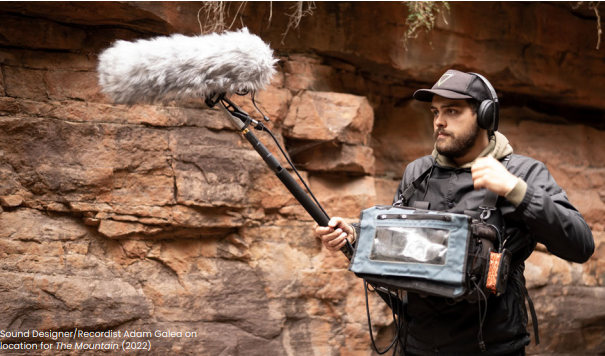The South Australian Film Corporation (SAFC) has outlined a new 10-year strategy designed to increase the representation of diverse groups in the state’s screen sector.
As part of the Diversity and Inclusion Strategy 2022-2032, the SAFC has set targets for practitioners that are First Nations, female, LGBTQIA+, Culturally and Linguistically Diverse (CALD), regional and remote, and Deaf or disabled, or an intersection of these identities. The targets apply to key creative Greenlighters (credited writers, directors and producers) and credited crew on SAFC productions supported with development and production funding.
By 2032, the organisation hopes for a 5 per cent First Nations and 50 per cent female presence in each of the production categories, as well as 8 per cent from LGBTQIA+ communities groups and 10 per cent from regional and remote areas.
There are also targets of 25 per cent and 15 per cent for CALD practitioners in Greenlighters and credited crew, respectively, along with 10 per cent and 8 per cent for Deaf or disabled.
According to the SAFC’s 2021 Industry Stakeholder Survey, Greenlighters carried no First Nations representatives, while being 38 per cent female, 8 per cent LGBTQIA+, 13 per cent regional or remote, 21 per cent CALD, and 8 per cent Deaf or disabled.
In credited crew, 1.6 per cent were First Nations, 39 per cent were female, 14 per cent came from LGBTQIA+ communities, 8 per cent came from regional and remote areas, 13 per cent were CALD, and 3.2 per cent were Deaf or disabled.
SAFC CEO Kate Croser said the cultural power of screen, and the way it “can shape the way we see ourselves and others” made diversity and inclusion essential to production.
“The SAFC has long been committed to improving diversity and inclusion in the South Australian screen sector, championing diverse storytellers and authentic representation in screen productions,” she said.
“We recognise that diverse practitioners have experiences, make observations, and face barriers that are unique to them, giving them unique perspectives on life and the world.
“Their representation is vital for ensuring the screen stories we support are not only authentic but continue to connect with audiences here and internationally.”

The SAFC’s strategy incorporates the “organisational foundations” of collaboration and culture, as well as six key pillars – opportunities, skilling, networks, resources, access and accountability.
The working group to develop the plan comprised producer and SAFC board member Tony Ayres, SAFC disability screen strategy executive Gaelle Mellis, SAFC board member Miriam Silva, SAFC First Nations screen strategy executive Pauline Clague, SAFC First Nations industry development executive Nara Wilson, SAFC head of production and development Beth Neate, and former SAFC First Nations screen strategy executive Lee-Ann Buckskin.
Ayres said he was particularly proud to have been part of the development of the “bold new strategy”, being from several intersecting under-represented groups in the Australian screen industry.
“Creating a culture in the screen industry that was as inclusive and representative of the society we live in needs strategies for active inclusion as well as structural change to remove barriers to participation – and that’s what the SAFC’s Diversity and Inclusion Strategy sets out to do,” he said.
Past SAFC projects and programs to highlight diversity include children’s series First Day which has won acclaim for its portrayal of a transgender teenager; Rolf de Heer feature film The Mountain, currently in post-production, which included four First Nations South Australian crew supported by the SAFC to gain their first feature film credits as heads of departments; and The Film Lab: New Voices program, an initiative designed to create Greenlighter skills development opportunities for practitioners from under-represented communities.
There is also SAFC and Channel 44’s First Nations Internship Program, which mentors and trains First Nations screen creatives to discover new careers in TV production, and the SAFC’s Targeted Diversity Attachment program, where LGBTQIA+, Deaf and disabled, CALD, and First Nations crew gain on-set employment.
The Diversity and Inclusion Strategy 2022-2032 becomes part of the SAFC’s established suite of diversity policies including the inaugural Disability Equality Plan released in 2020, the First Nations Screen Strategy 2020-2025, and the ongoing Reconciliation Action Plan.



